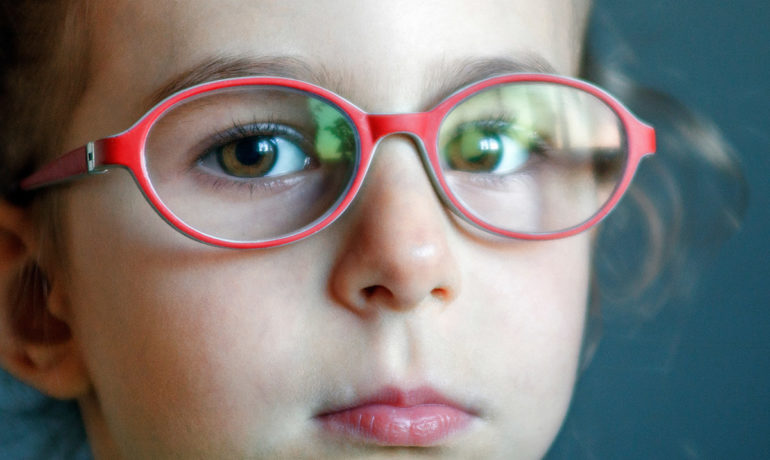Does your child or teen struggle with a lazy eye or eye crossing? Conditions like strabismus and amblyopia frequently occur in young people. While not uncommon, these concerns can lead to ongoing problems for a child. Having crossed eyes or a lazy eye can cause everything from visual impairment to low self-esteem.
Fortunately, there are various treatment options for both strabismus and amblyopia. Learn more about both conditions and their treatment options below.
What Is Strabismus?
Most often referred to as crossed eyes, strabismus is an eye condition in which one or both eyes are misaligned inwards or outwards. The condition can be congenital, meaning it is present at birth, or it can occur later in childhood.
Congenital cases are often the result of genetics and family history. When the eyes become misaligned later in life, it is typically the result of the following factors:
- Farsightedness (trouble seeing up close)
- Brain damage that affects eye function
- Damage to the nerves controlling eye movement
- Trauma to one or both eyes
- Damage to the muscles that control the eyes
Strabismus can also occur as a result of certain pre-existing conditions. This includes cerebral palsy, Down Syndrome, or stroke.
Symptoms of Strabismus
Symptoms of strabismus can manifest in several ways. The most obvious sign is an outward or inward misalignment of the eyes. Rather than focusing forward, the eyes will turn inward toward the nose or outward, away from the face. The eyes may also turn upward or downward in some cases.
When a child has strabismus, parents may notice certain physical symptoms. This includes squinting, frequent blinking, or tilting the head in either direction. Many children with crossed eyes will experience symptoms of visual impairment, including double vision and faulty depth perception.
Treating Strabismus
The most common type of therapy used for crossed eyes is a treatment called eye teaming. This process involves training the eyes to work together in a coordinated way. Customized exercises guide the eyes to move together in precise ways that help promote proper alignment.
Other vision therapy treatments for strabismus include prescription eyewear, such as prism lenses, eyeglasses, or contact lenses. More severe cases may require eye muscle surgery.
What Is Amblyopia?
More commonly known as a lazy eye, amblyopia refers to the lack of or loss of vision in one eye. The affected eye typically cannot focus as clearly as the other or may lack vision completely.
The condition usually occurs in children under the age of 6 due to genetics or premature birth. Due to certain underlying factors, it can develop later in life in less common instances. These underlying factors include the following and more:
- Nearsightedness (trouble seeing far away)
- Farsightedness (trouble seeing up close)
- Astigmatism
- Strabismus
- Cataracts
Amblyopia can also occur due to certain neurological factors. When the nerves that send signals from the brain to the eyes are damaged or unable to function correctly, it can impact the vision in one eye.
Symptoms of Amblyopia
Amblyopia symptoms can range in severity, from decreased vision in the affected eye to complete loss of vision in the affected eye. These visual difficulties can lead young people to show outwardly apparent signs and symptoms.
Parents may notice their child squinting or shutting the affected eye. Very young children may tilt their heads in the direction of the affected eye. The most apparent symptom is the appearance of a “lazy eye,” in which the affected eye drifts upward or downward rather than focusing on what is being looked at.
Treating Amblyopia
Treating amblyopia can be approached in several ways. Cases caused by vision issues or eye conditions may resolve once the underlying condition is treated. Younger children with a lazy eye can be treated with vision therapy, including eye teaming.
As the preferred treatment method for amblyopia, vision therapy focuses on re-training the brain to better interpret and interact with the eyes.
This involves a customized treatment plan that includes specific activities and exercises to strengthen your child’s visual skills. Eye teaming techniques can train the affected eye to focus on objects along with the healthy eye.
Vision Therapy at Rancho Santa Fe Optometry
Rancho Santa Fe Optometry provides vision therapy to help patients with strabismus and amblyopia. Contact us today to schedule your child’s comprehensive eye exam in the Rancho Santa Fe, California area.
At Rancho Santa Fe Optometry we offer comprehensive eye examinations for all ages. With a focus on children’s vision and vision therapy, our doctors test for visual acuity, visual efficiency skills and visual information processing starting in early infancy. The practice also provides diagnosis, treatment and management of diseases that affect the human eye and visual system, including dry eye syndrome, diabetic retinopathy, cataracts, macular degeneration and keratoconus.
